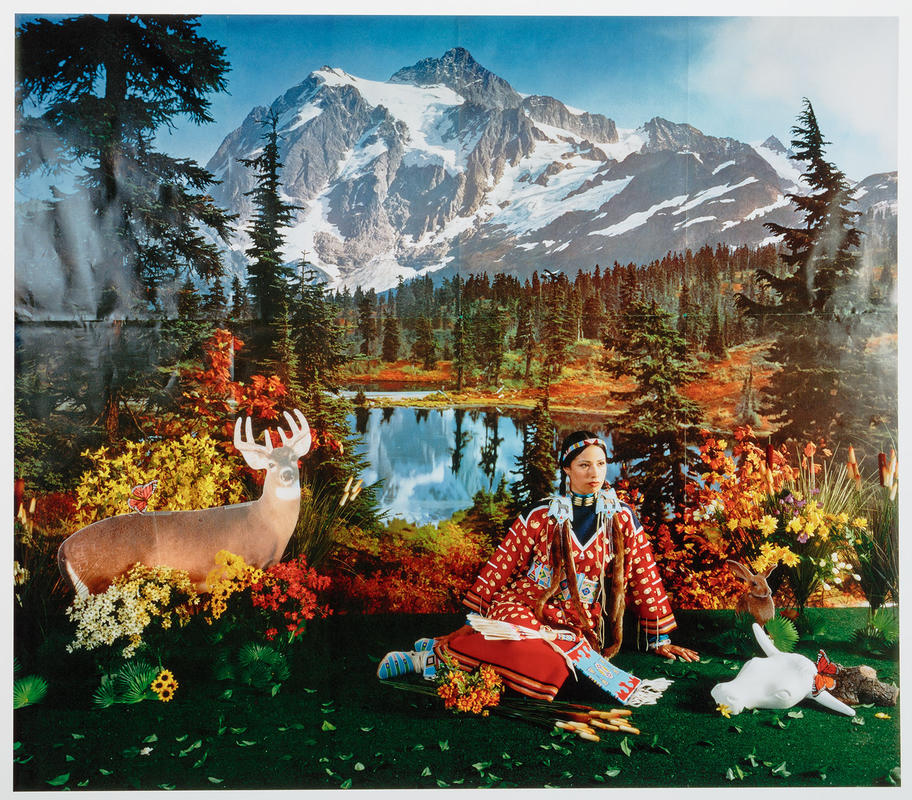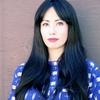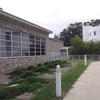More about Indian Summer

Sr. Contributor
Wendy Red Star is an extremely versatile artist, using a variety of mediums to create her art, including sculpture, sound, video, performance, textiles, and photography.
She is good at all of them, but the photos she creates are where she really stands out, often literally, as she uses her own image in some. As a Native American artist, Red Star draws on her cultural background, as well as her own experiences growing up on the Apsaalooké (Crow) Nation Reservation in Montana, with her Native father and Irish mother.
Her formal art education was focused on sculpture, but along the way, she found that photography allowed her to make cultural commentary using colorful, bright images interjected with humor, irony, and maybe some absurdity and cynicism thrown in for good measure. Speaking of her time at UCLA, she said, “I became very intrigued with all the photo majors and the way that they worked. And I also loved the fact that I could tell stories with photos. So, between 2004 and 2006 is when I really started to dive into using the camera as a tool for my art making.” In her photographs, she sometimes uses a variety of props, including an inflatable elk, plastic skeletons, cheap “Indian” headdresses and costumes, and cardboard cut-outs of animals, among other things.
Indian Summer is one of four photographs from Red Star’s series, "The Four Seasons." The other three, as you might have guessed, are titled Fall, Winter, and Spring. (The photo is titled Summer on the artist’s website, but Indian Summer at the Des Moines Art Center and other institutions.) She may have gotten the idea for this series from seeing the dioramas that are often used in natural history museums, where Native American figures are posed next to stuffed wildlife, as if they, too, are part of the past., Red Star herself is seated in the center between a plastic steer skull and a cardboard cut-out of a deer while wearing an elk’s tooth dress (that she likely sewed herself).
The significance of the dress is by design; in the matrilineal Apsaalooké tradition, the large number of elk eye-teeth (only two per elk) on the dress shows the wearer’s connection to a successful hunter or tradesperson, thereby conferring status on that wearer. Red Star usually shows a link in her art to the Apsaalooké culture that she is a part of, whether by the traditional clothing and regalia, or images from the reservation where she grew up. However, in Indian Summer, as well as the other photos in the series, just about everything in the scene, except for Wendy herself, is artificial: the grass, leaves, animals, water, and the backdrop, which is just another larger photo. She uses these items to confront certain views of Native art: “There’s a whole notion of being ‘authentic,’ Your art is supposed to look like the nineteenth century, like we’re a dead culture that never evolved.”
As for why Red Star often places herself in her photos, she has done this as a response to the history of non-Native photographers creating representations of Native people. This was usually done to present them as if they were stuck in a moment of time; Edward Curtis was probably the most well-known photographer who did this. He would frequently romanticize the Natives he called the “vanishing race," sometimes adding props or items of clothing so their appearance would better match non-Native imaginations of their people. The idea that Native Americans are somehow “extinct” is still something that they deal with today, as Red Star relates, “I think people are surprised when they find a Native person because in the consciousness of America it’s like we don’t exist. We are these mythical creatures.”
Sources
- Beck, Abaki. “Decolonizing Photography: A Conversation with Wendy Red Star.” Aperture, July 28, 2020. https://aperture.org/editorial/wendy-red-star/.
- “Indian Summer, from the Series Four Seasons.” Portland Art Museum, January 13, 2021. https://portlandartmuseum.org/learn/educators/resources/posters/indian-….
- Lutz, Sherée. “‘Wendy Red Star: Parading Culture (Tokens, Gold, & Glory)," Haw Contemporary.” KC STUDIO, September 30, 2021. https://kcstudio.org/wendy-red-star-parading-culture-haw-contemporary/.
- Mentzer, Morgan. Wendy Red Star, 2018. https://www.arts.gov/stories/magazine/2018/1/women-arts-galvanizing-enc…
- Radin, Sara. “Wendy Red Star's Art Celebrates the Indigenous Roots of Feminism.” I, May 21, 2019. https://i-d.vice.com/en_uk/article/ywyb5k/wendy-red-star-art-celebrates….
- Snow, Jordyn. “Wendy Red Star.” prezi.com, April 27, 2015. https://prezi.com/s1w-gzyur996/wendy-red-star/.











